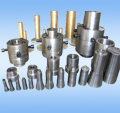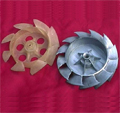

| Address: | PDS Enterprise Inc. 1650 West Artesia Blvd, Suite 278 Gardena, CA90248 |
| Phone: | 1-843-408-0142 |
| Email: | pdsenterprise@gmail.com sales@coolprototyping.com |


Home>Popular Page
36. Rapid Prototyping or Rapid Tooling in Architecture
Rapid tooling affirmed to be a powerful solution in the seeking to develop better products more quickly. In the future, rapid tooling will commonly be used to slash the time for the delivery of components in production tooling intent materials.
Presently, there are barriers to the broad acceptance and application of rapid tooling. However, if the definition of rapid tooling is expanded, it can be a powerful and beneficial tool.
Rapid Tooling Defined
The original, and most accurate, definition of rapid tooling is: A 3D CAD-driven process that generates tooling inserts in a layer-by-layer (additive) process for the production tooling of components in end-use materials. In simpler terms, this means building tools from a rapid prototyping process. In the past few years, the definition of rapid tooling has become broader and somewhat unclear:
Any process, technique or technology which significantly reduces the delivery of a tool for the production of components in end-use materials. Translated, this means cutting an aluminum or steel tool can be considered rapid tooling.
When the search for a rapid tooling solution begins, it is common to use traditional tooling techniques as the benchmark. The goal becomes the replication of all the quality of a cut tool while slashing the delivery time and expense. With these standards, the options become limited. These imposed limitations can make it best to seek out a tool shop that is extremely fast and efficient at building cut tools in aluminum or steel. In the evaluation of projects, Accelerated Technologies often finds that a machined tool is a far superior solution. Under the original, narrow definition, rapid tooling has limitations in many areas.
These include:
Tool life
Accuracy
Surface finish
Resin selection
Tool configuration
Cycle time
Part size
Each available rapid tooling solution presents limitations in at least two of these areas. When the strengths and weaknesses of the processes are presented, many elect to use traditional methods that may require more time. It certainly will be a dream come true if technology brings down cost of buildings.
Fast prototyping cannot replace our current building practice, but at least it will help to construct a mock-up to improve the design. It is a known fact that a full-size building mock-up is necessary to eliminate errors and the need for future design modifications. Fast prototyping can accelerate the mock-up process, bring down the cost, and speed up the final construction time.
Full-size building component prototypes are not yet in production, because they require detailed connections and some modifications. It is not hard to imagine, that in the near future an entire house will be manufactured by an LOM machine or other RP processes directly. Such a notion is exciting and will revolutionize the building industry. Rapid tooling is a powerful process that can definitely make the building process faster, cheaper, and better.
 We are constantly looking for new products in order to grow our business and Invention Home has enabled us to streamline that process much more quickly.
We are constantly looking for new products in order to grow our business and Invention Home has enabled us to streamline that process much more quickly. Marsha Dunmyre
CA, U.S.A
Cool Prototyping Copyright 2008-2009 © All Rights Reserved. Rapid Prototyping






